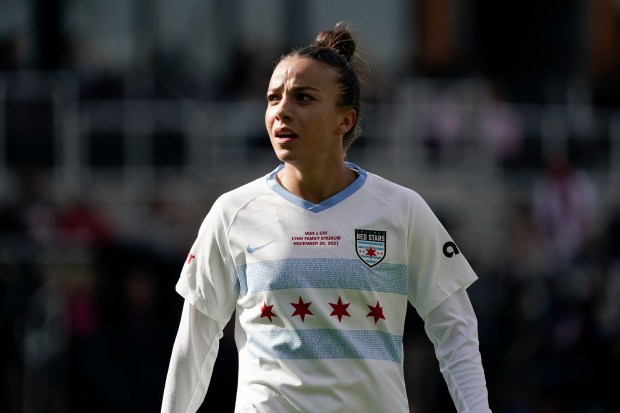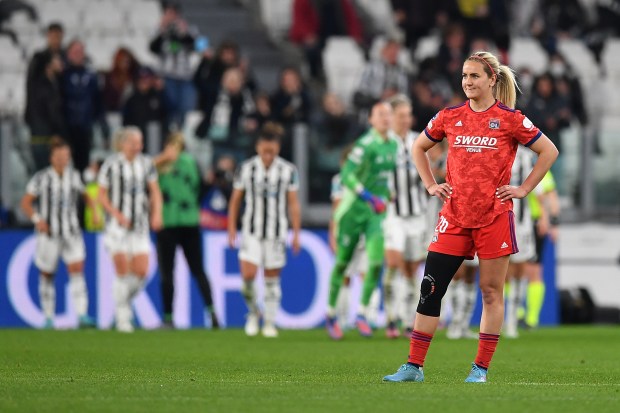I have to admit, I’ve been feeling a little jealous of Kansas City.
Sure, it stings that the Chiefs are headed to Super Bowl LIX on Sunday, but that’s not what I’m talking about.
After selling out every home game in their brand new 11,500-seat stadium on the muddy Missouri River, The Kansas City Current made it to the semifinals before being forced to watch Orlando and Washington duke it out in their new home for the National Women’s Soccer League championship.
Meanwhile, Denver doesn’t have a single professional women’s team – no WNBA, PWHL, or … well, that’s pretty much it in terms of big-league franchises for women’s teams sports (our champion ultimate players on the Colorado Alpenglow are only getting $25 a game).
But that’s finally about to change.
Robert Cohen dropped $110 million – a record fee for any women’s sports franchise – to bring an NWSL team to Denver starting in 2026. A team of investment partners has promised to build the athletes they sign a proper stadium and practice field in the city of Denver.
The future has never looked brighter for Colorado athletes.
Growing up, my family drove four hours every other weekend to Denver so I could play club-level soccer. I loved the sport more than anything, and I dreamed at times of playing for the ever-dominant Tar Heels (not much has changed in 30 years as North Carolina won the 2024 NCAA Division I championship).

But back then, professional soccer was non-existent. It wasn’t until I got into high school that the success of the 1999 Women’s World Cup championship team finally launched the eight-team Women’s United Soccer Association. The league folded abruptly in 2003 after a steady decline in attendance and reports of feverish spending. Players took pay cuts, but nothing could save a league hemorrhaging money. It seemed America loved Mia Hamm, but even the owner of the Discovery Channel couldn’t market her success and charisma.

My soccer skills slid a bit in high school as my love for journalism grew – I was no longer the dominant player I once was – but also there was no future for female athletes beyond college. When boys said they wanted to be an NFL player when they grew up, they’d get a clap on the back and maybe even an encouraging word about practice and commitment. When I was a child, professional sports for women wasn’t a career. It was a hobby. My dream of becoming a professional soccer player was impossible unless I could cut it among the men. Changing that changed everything.
I still find it shocking that the modern NWSL didn’t appear for another decade, leaving a gaping hole in athlete development for our hugely successful and popular national team. I don’t know how to account for the vast difference in financial support and enthusiasm between women’s and men’s sports. Critics always say women can’t play at the same level as men so the games are less interesting and slower-paced. I refuse to buy that bull because I’ve watched grown men lose their cool watching 5-year-olds play co-ed soccer in a game without any scorekeeping.
Sport is sport, and Denver’s new professional team might not be able to beat the Colorado Rapids (yet) but the athletes playing in the NWSL today are at a level that is mind-blowingly fun to watch. And my guess is that the gap between men’s and women’s performances has been rapidly closing in the last decade with the development of a real professional sports league, and the possibility of endorsements on top of a (smallish) salary.
The remarkable thing about the 2001 league was that the founding athletes from the World Cup team were getting paid $80,000 (not accounting for inflation). Today, Sophia Smith, a Colorado kid whose commute from Windsor and dedication to soccer makes my story look silly, is making more than $500,000 a year in her new contract with the Portland Thorns, and reports say her outside contracts and sponsorships are worth another $1.2 million. And don’t forget to add what she’ll make from the national team.
Mallory Pugh Swanson of Highlands Ranch just leaped ahead of her national teammate, with a record-breaking $2 million contract for four years with the Chicago Red Stars. And Lindsey Horan, of Golden, may be getting paid in Euros at the moment but she’s also estimated by Forbes to be raking in $1.5 million annually between her on-field and off-field activities.
These 2024 gold medalists aren’t breaking their contracts to come home to Denver anytime soon, but it’s the promise and excitement of having a Colorado team to root for, to inspire the next generation of athletes, and of more opportunities for more women as the league expands with 2 million attendees last year and a $240 million broadcast contract.
I know Colorado will welcome this new team and make me proud. More than 14,000 people came out to watch professional women’s hockey play at Ball Arena last month in a game between the league’s Minnesota and Montreal teams.
Being an athlete in a team sport is now a lucrative career for women, and finally, that career option exists in Colorado. Now, let’s add some hockey and basketball teams, and Colorado’s daughters won’t have to move to Kansas City after all.
Megan Schrader is the editor of The Denver Post opinion pages. Contact her at [email protected].
Sign up for Sound Off to get a weekly roundup of our columns, editorials and more.
To send a letter to the editor about this article, submit online or check out our guidelines for how to submit by email or mail.
